Mining Hardware Roundup
It's been 7 months since my last post. New products and companies have come to market with some interesting gear. I wanted to jam a lot more into this one but I'll save that for later.
Here are some that have caught my attention since my last post.
Spotlight
Box Technology - boxtechy.com
Lizzy entered the chat in August with a video of her presenting Box Technology's 200kW immersion system, which included the biggest braised copper heat exchanger I've ever seen.

They offer 3 different cabinets of different cooling capacities: 40kW, 120kW, and 200kW. The 40kW unit has space for 8x S19's. The 120kW unit integrates 3 of the 40's into a tower with drawers kind of thing - similar to the BixBit and DXC tower sets.
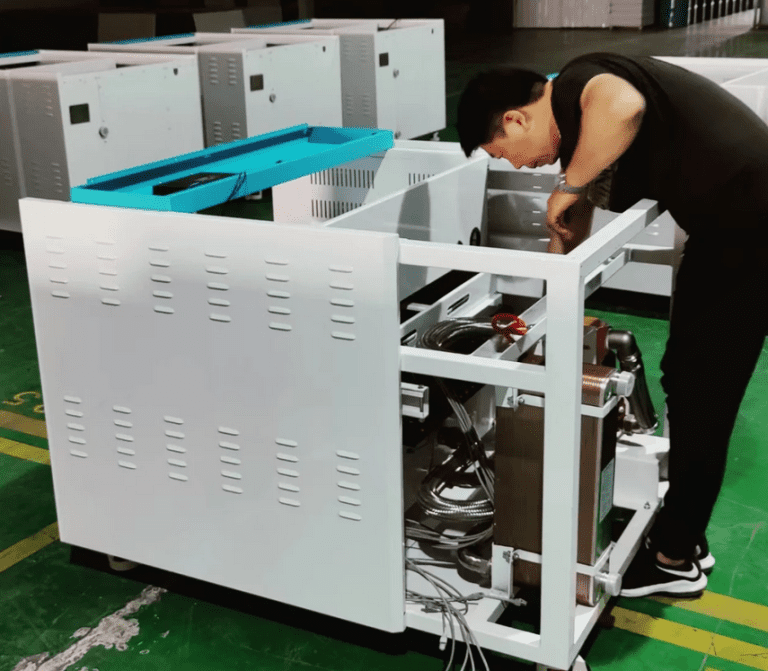
The 200kW tank has space for 39x S19's, and takes up more floor space per miner than the tower sets. It's a pretty slick design in my opinion. All enclosed, no heat exchangers or pumps sticking out the bottom. Enclosed PDU and control system. Gas struts are also a nice touch. It's funny how it took this long to get to gas struts, or even just a fully shrouded system - some of the larger American manufacturers are only beginning to add lids to their tanks now.

They will soon also offer 20ft container systems - Lizzy was kind enough to share some of the concept images with me. There are 2 variations - one with and one without dry coolers. The dry cooler inclusive system has a 560kW capacity. The other container without dry cooler has a 650kW capacity.


FutureBit - futurebit.io
Here's a really cool bit of kit. FutureBit makes a thing called the Apollo BTC (200W). It is a relatively small desktop computer dedicated to mining, running a Bitcoin node, and wallet. Bringing the whole ecosystem of Bitcoin back into a single device, similar to when Satoshi's original wallet software had a wallet, node, and mining functions integrated into that software. Having hardware like the Apollo BTC massively lowers the barrier of entry for people curious about mining. It is relatively quiet - running at 125W, the Apollo BTC is only 25dB. Hashing at 3TH/S, 20% the speed of the Antminer S9, but around twice as efficient. Plug a keyboard and screen into this thing and operate the wallet, node, and mining software on the thing directly, or you can leave it running in a cupboard somewhere connected to Wi-Fi, and access the software remotely via local webpage - easy.
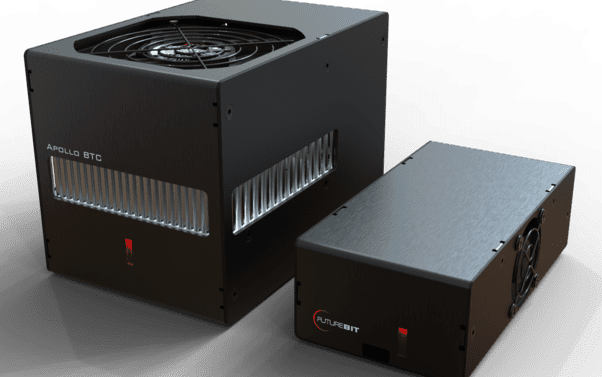
FutureBit is decentralizing the hash-rate throughout the world by bringing more miners into individual homes, improving the resiliency of the Bitcoin network. Their founder shows the guts of one of their mining nodes. That's one fat heatsink.

Mint Green - mintgreen.co
Mint green is a Canadian technology company focused on recycling heat via mining. They have come to my attention after concept pictures of an industrial space heater surfaced in the group chats. It is an immersion mining system named Tumbler that employs an interesting mechanism - to maintain thermal uniformity throughout the tank; hash-boards are mounted in a concentric circle pattern within a sealed drum that rotates periodically 😳
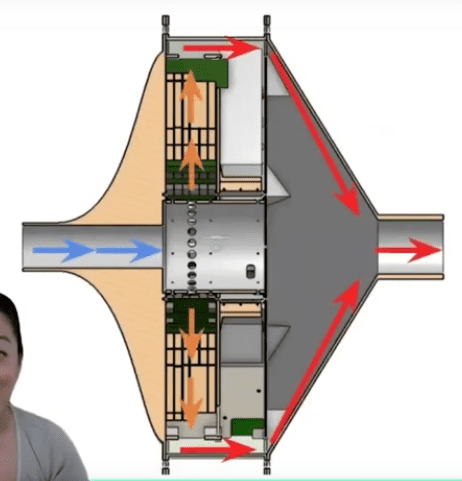

This unit will be used to heat whisky barrels at Shelter Point Distillery - they require large volumes of thermal energy for their mash and whisky barrel aging processes. I'm very interested in seeing how this machine performs.


HeatCore - heatcore.tech
I'm happy to see more direct to chip (D2C) cooling products come to market. HeatCore is a company that manufactures water heating systems using Whatsminer M53 blades, which you can't even buy yet. The M53 runs at 29J/TH, which puts it up there with the most efficient SHA256 ASICs currently. Basically, instead of fully immersing their servers in oil, they use a water cooling loop - like traditional PC cooling and the S19 hydro's. There's plenty of machined aluminum waterblock kits out there for retrofitting popular ASICs. The Bitmain S9 and S19 use stamped water blocks, which is much easier to produce. I'm eager to see a teardown of these Whatsminer blades.
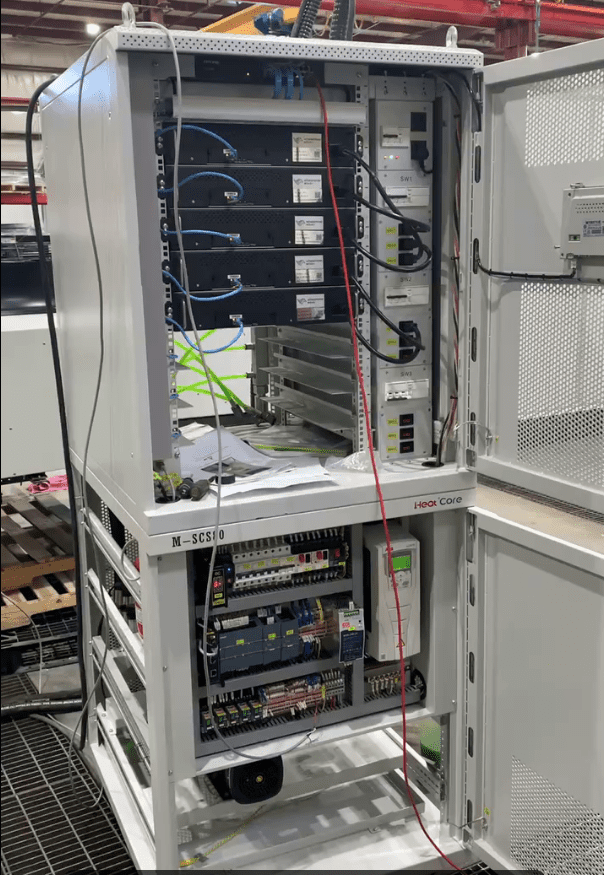
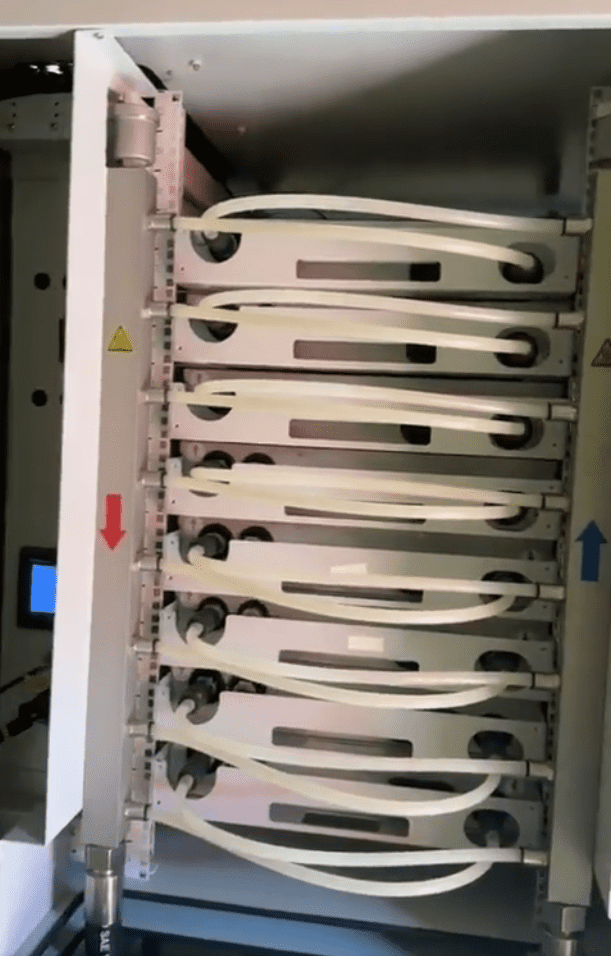
HeatCore and Whatsminer had an exhibit at the Whatsminer hydro cooling show, showing off the new gear. Hooked up to a hydroponics and aquaculture system, the HeatCore cabinets provided heat to these crops using waste heat from the ASICs. It's good to see mining equipment adopt traditional industry hardware standards. By adopting these standards, upskilling technicians in the datacenter and electrical industries will be simpler if the techs are already familiar with the tools and workflows from industries with well established hardware and asset management standards. HeatCore had been working with a fish farm to integrate their products into the client's heating systems. Aparently they made more money selling the fish than they did from mining - makes you think. I'm looking forward to seeing how these D2C units (M53 & M33) perform vs their immersion alternate (M36s), especially considering maintenance of the two cooling types.

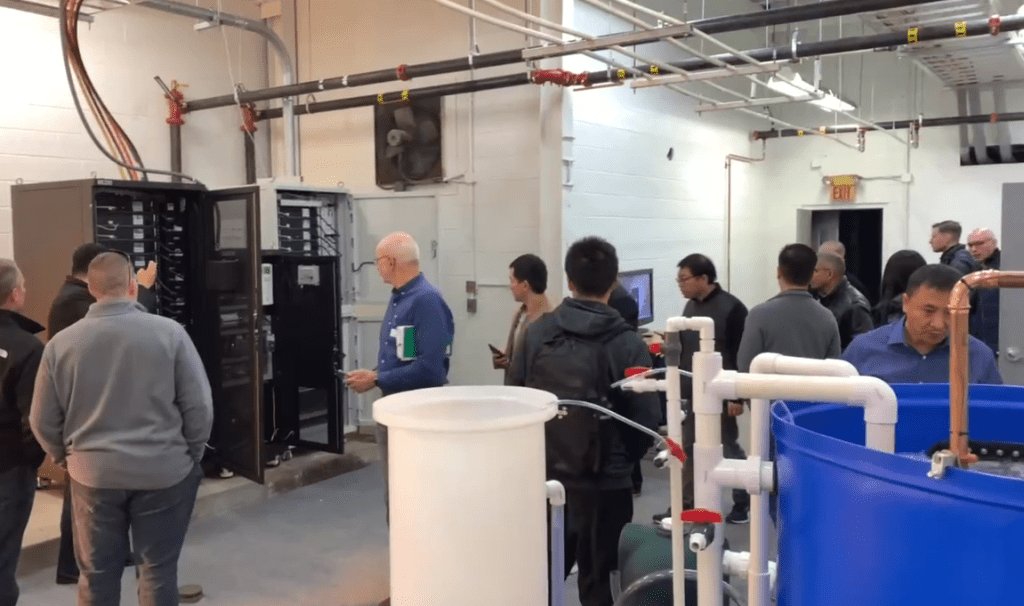
More cool stuff
Here's some pictures and things I've seen around lately that I just thought were neat.
Artic Systems lids
Arctic systems manufacture sheet metal immersion tanks and dry coolers. I've watched them grow as a company in the immersion tech group chat. They've really taken off, and at speed. They make some of the prettiest tanks, in my opinion. Stan from Arctic shows off some concept renders for tank lids - looking SLIC (pun intended, sorry).
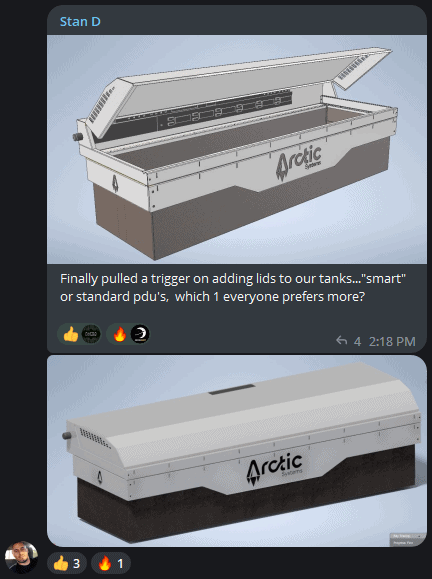
Pipes n hoses
Mountaintop Mining posted these pictures in the chat showing off their new facility. I liked the fact that they used PVC piping - you don't see that often in American facilities, they love metal pipework. It reminded me of my first SLIC prototype tank.
They opted to use Engineered Fluids SLIC tanks for their facility. It's interesting to see the diagonal flow plate design. I don't think the industry has settled on the best type of flow plate design to use just yet. Notice how the PSU receives much less flow than the hash-boards would - 3 slits compared vs many diagonal slots.
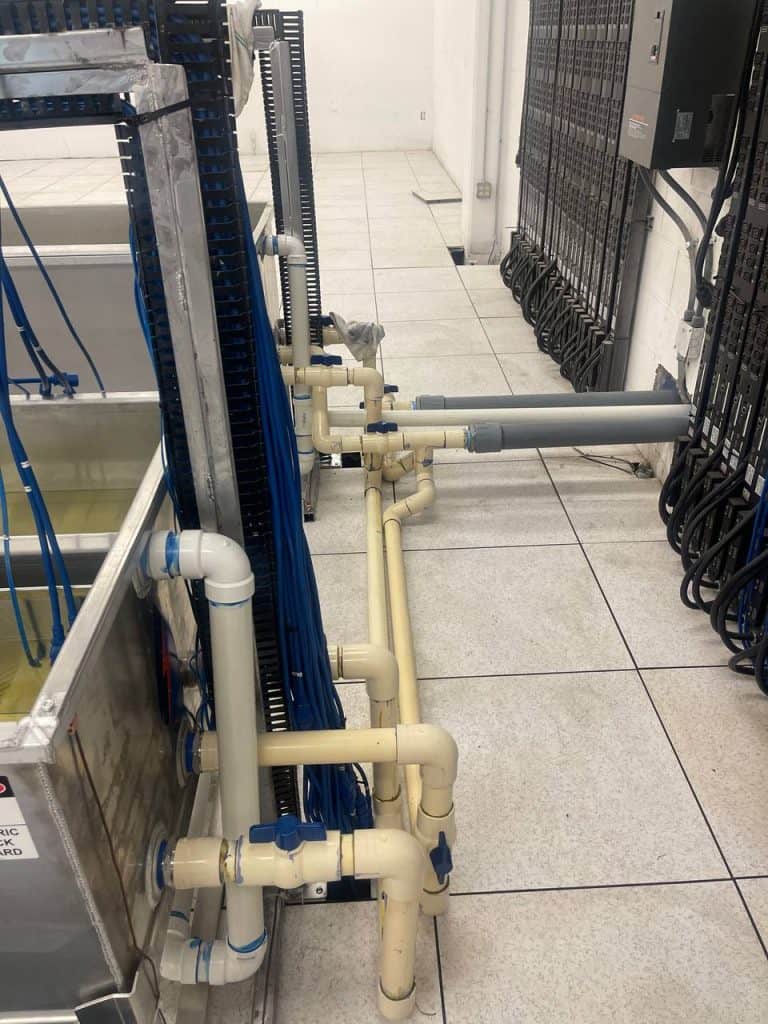
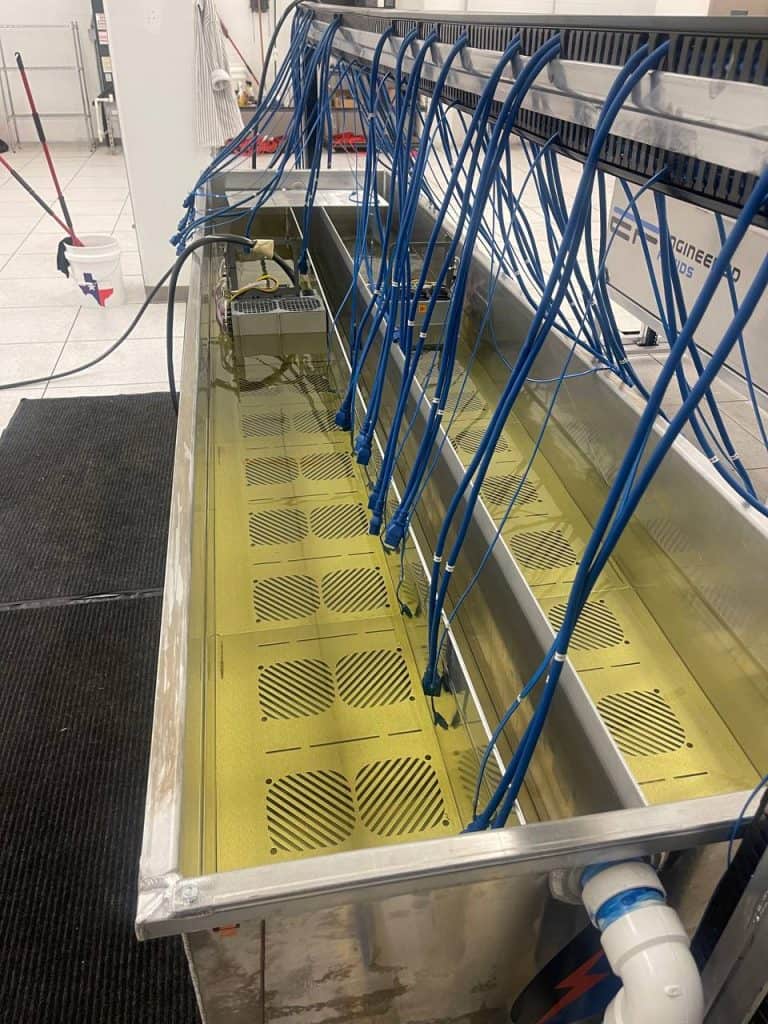
The legendary Scott Offord will be selling immersion tanks soon. Here's pictures of the flow plate's he's using in his tanks.


Here's a picture of Modern Mining's facility in Canada. I'm quite fond of the use of hoses here. Most facilities I've seen pictures of use rigid pipework. Much of Modern Mining's equipment don't seem to be permanently fixed in place. This gives them the ability to pack up their gear and move to a location with cheaper power if the opportunity presented itself. The industry is volatile, I think this is pretty smart. Using hoses also gives them the flexibility to scale up their hardware without having to uninstall a lot of fixed rigid pipework. Notice how the dry coolers aren't fixed to the ground.
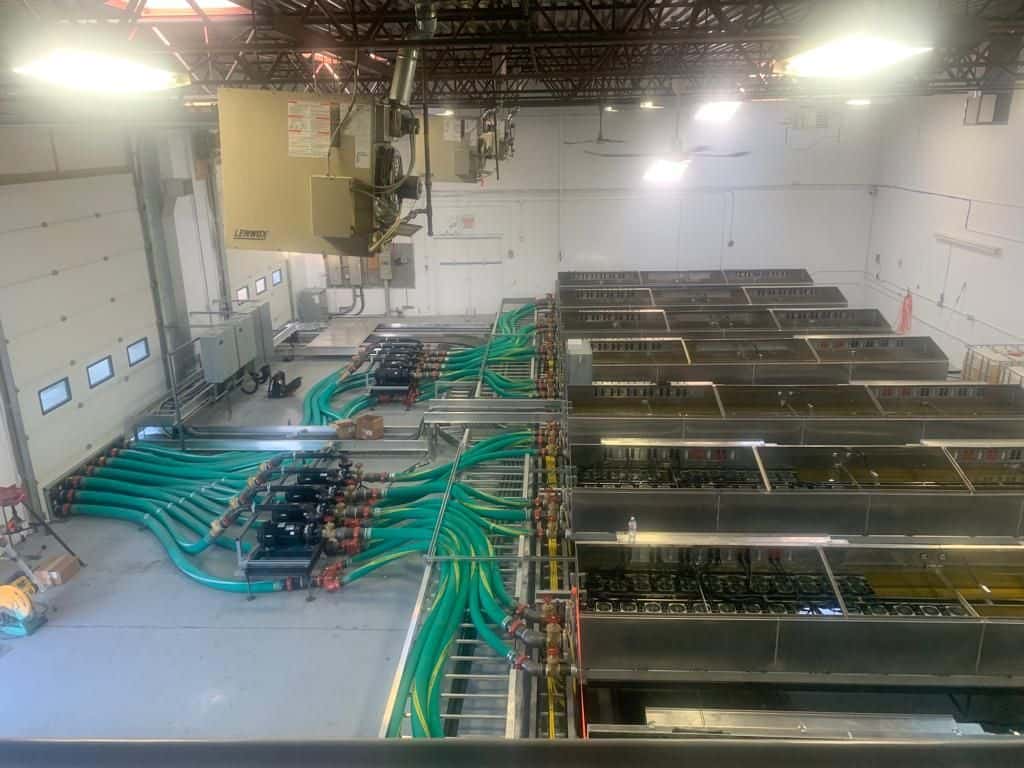
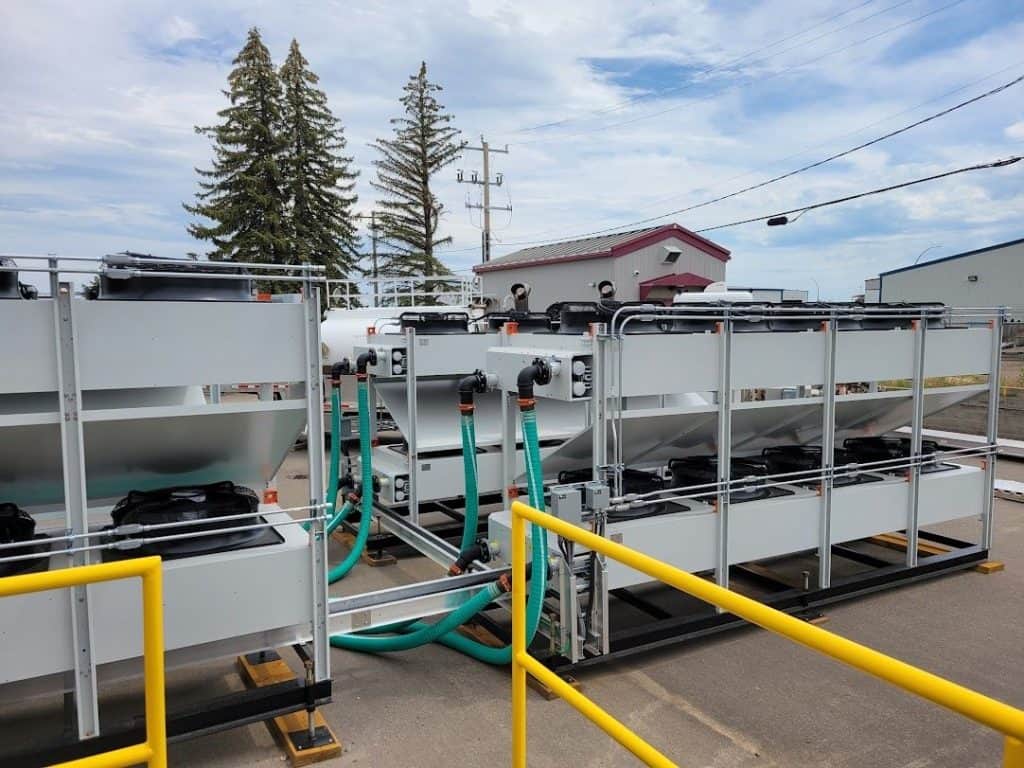
Cryptotherm teased a render of what looks like an immersion tank for servers with a traditional chassis - WITH LID, lol.
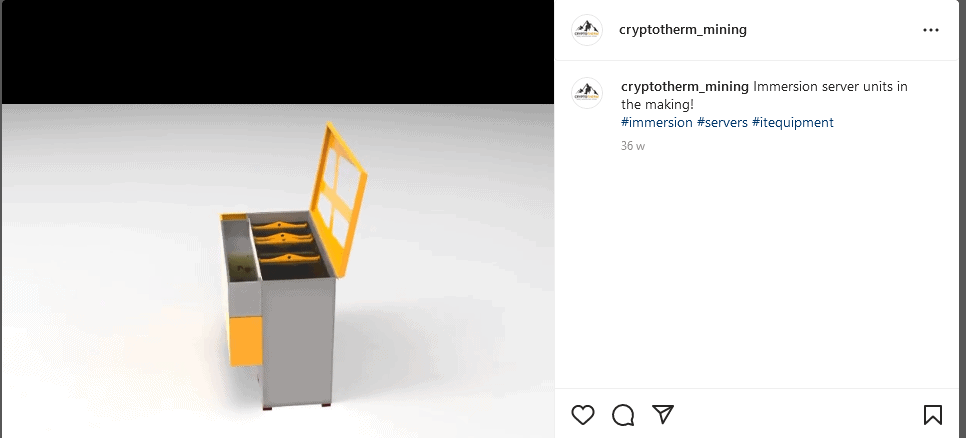
Mike from Alpha Miner showed us a picture of a ridiculous overclocked S19 dashboard.

An S19 (110Th) is designed to run at 3250W, full load. Alpha Miner achieved a stable overclock of 9000W - a 277% increase in power for a 173% increase in hash-rate. The miner was immersion cooled of course.
And finally, Cam Dunlap showed off pictures of his ground loop. It was only a matter of time before someone finally tried to cool their miners using this method. For those that don't know - hot oil from the immersion tanks are pumped through coiled hose run underground, where the heat dissipates into the ground, returning the oil cooler than it left.
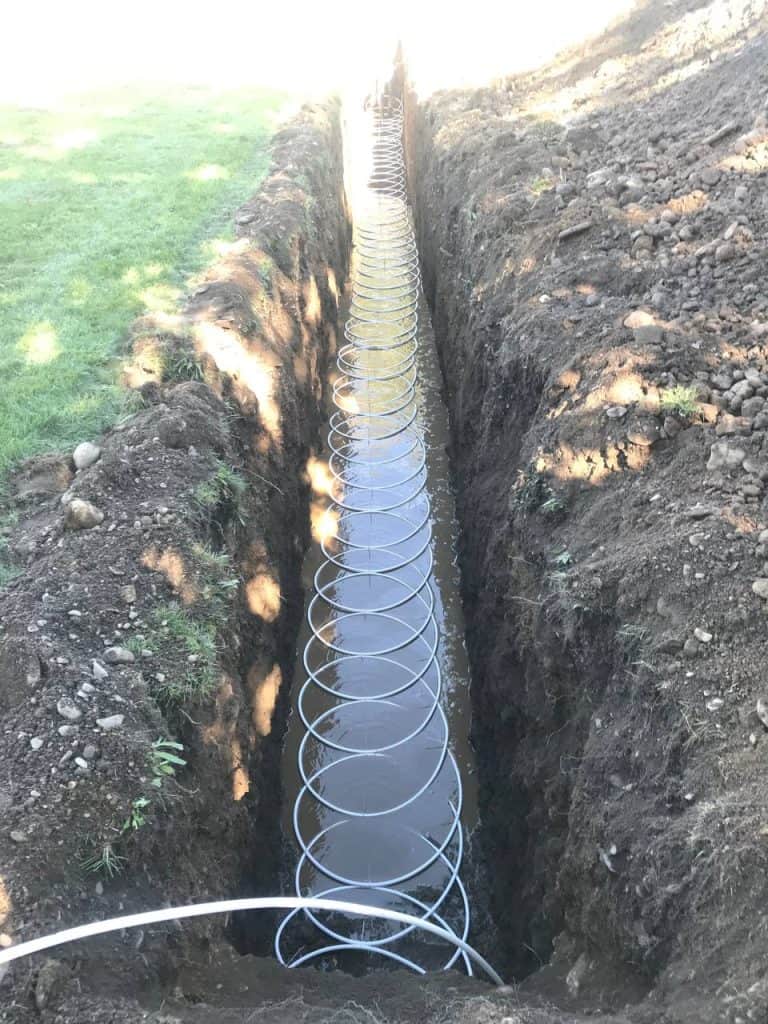
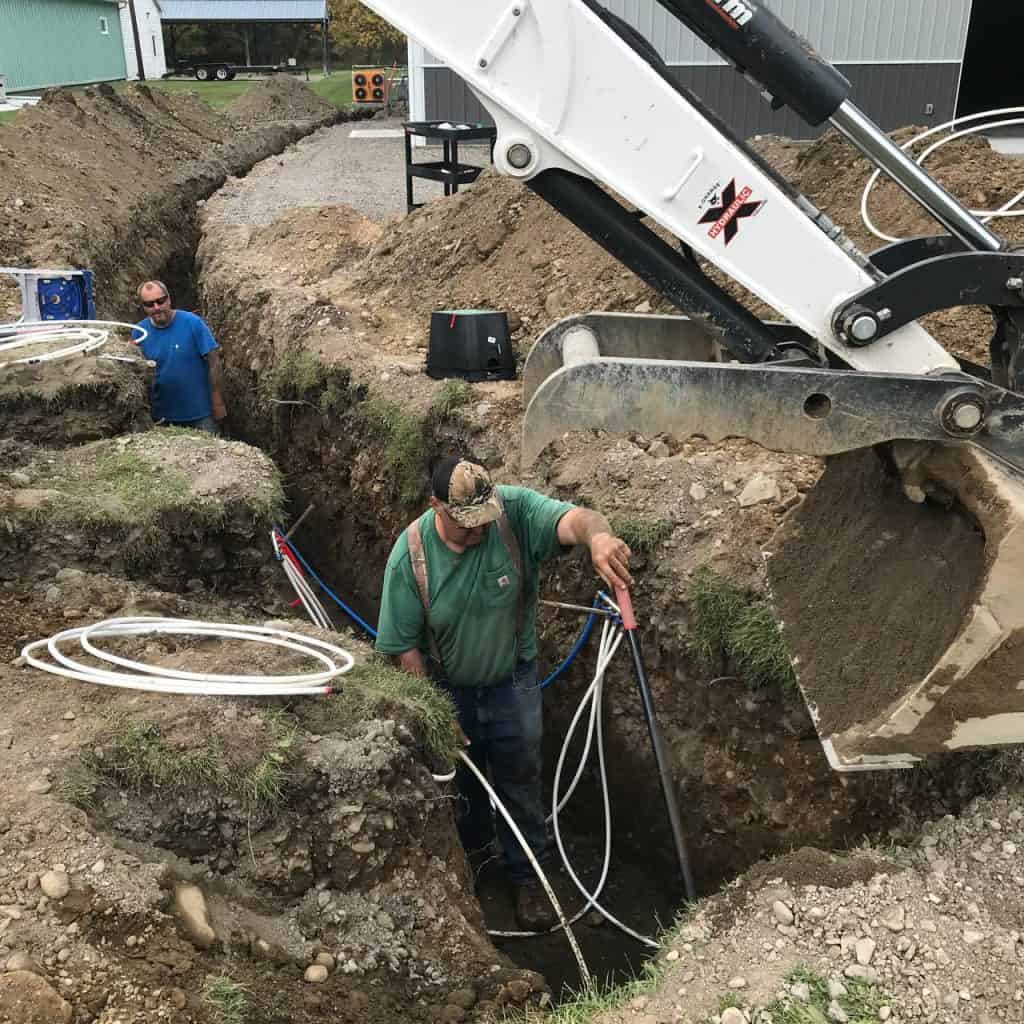
That's it for now - stay tuned for more articles like this and more in-depth analyses of hardware and industry trends.
© Dev.RSS